It’s human nature to always be searching for – and awed by – the latest and greatest. That tendency certainly extends to the automotive world, where the best new cars get all the headlines. But there are some important lessons to learn if we reverse course and look at some of the worst cars in history.
There was a good idea hiding somewhere within all of these vehicles, but in each case those good intentions were betrayed by ulterior motives, fueled collectively by a calamitous combination of greed, frugality, ego and short-sightedness. The result is five of the worst cars ever.
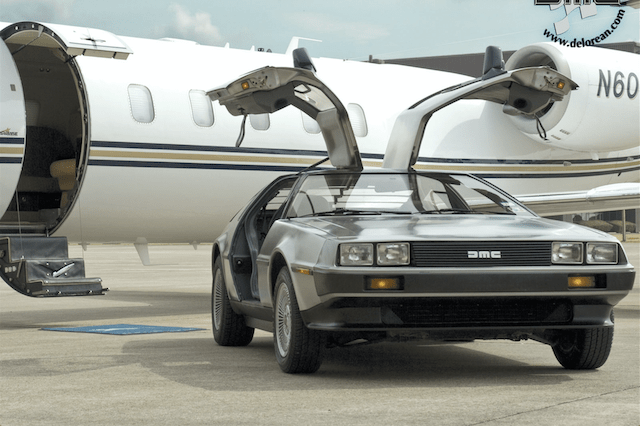
DeLorean DMC-12
It may be strange seeing the DeLorean DMC-12 on this list of the worst cars in history considering its fame and popularity. But off the silver screen, the car fell far short of expectations.
Former General Motors executive John DeLorean touted the DMC-12 as the sports car of the future. With its gull wings and sleek metallic look, it certainly has the aesthetics to meet that boast. But behind that façade was a heavy, underpowered and overpriced vehicle.
Originally, the company expected to sell 12,000 cars per year. In the end, only about 9,000 vehicles were made during its two-year run and the company was shut down in 1982. Ironically, the DeLorean became iconic just a few years later with its prominent role in 1985’s “Back to the Future.” The movie franchise ensured that the car’s legacy would extend well past its seemingly destined fate as an automotive footnote.

The Yugo
The Yugo was a decades-old Soviet-era Yugoslavia automobile imported to the U.S. in 1985. The decision to sell the car in America was the brainchild of entrepreneur Malcolm Bricklin and was destined for failure from the start. In an interview with Car and Driver, Bricklin recalled tasking his employees to find the cheapest car in the world. They did so at a 50-year-old factory in Yugoslavia that was manufacturing a 30-year-old car. “We took this piece-of-crap car and within 14 months had set up 400 U.S. dealers and made 528 changes to the car,” Bricklin said.
Yugoslavia had been manufacturing the car for years. Bricklin’s plan was to spruce it up and bring to America. There was no amount of changes that could overcome the vehicle’s poor quality, however. The Yugo’s engine generated a measly 55 horsepower, making the car dangerous to drive on American roads. The car was notoriously unreliable (the rear window defroster was reportedly there to keep your hands warm when you needed to push the vehicle), had many parts made of plastic, and oddly enough, featured carpeting as a standard feature.
But for the people selling the Yugo, the car was all about one thing: profit margin. The vehicle only cost $2,000 wholesale and was sold stateside for nearly twice that. Consumers quickly realized that even $4,000 was too much for the Yugo.

Pontiac Aztek
For as much grief as the Aztek got, it was actually at the forefront of what would prove to be one of the top automotive trends of the past two decades. When the car was first introduced in the early aughts, SUVs were surging in popularity and the idea of crossovers – vehicles with the space and power of an SUV combined with the on-street abilities of a sedan – was just beginning to take hold.
In fact, if you look the Aztek concept car, it doesn’t look all that dissimilar to some of today’s crossover models. Time magazine may have put it best, saying, “The shame is, under all that ugliness, there was a useful, competent crossover.”
Clearly, the idea behind the car was good, but the execution was not. The problem was that the Aztek was designed by committee. No singular, coherent vision took the lead and just about everybody got a say in the design process. Even the bean counters made their mark involved. GM accountants reportedly ordered the Aztek to be built on an existing minivan platform in order to reduce costs. This platform, however, was not long enough to hold the Aztek, forcing designers to create a box-like tail end.
The Aztek was in production all of five years, from 2001-2005. But showing that everything comes full circle, the car got a significant popularity boost when it was prominently featured as Walter White’s vehicle of choice in the uber-popular television show “Breaking Bad.”
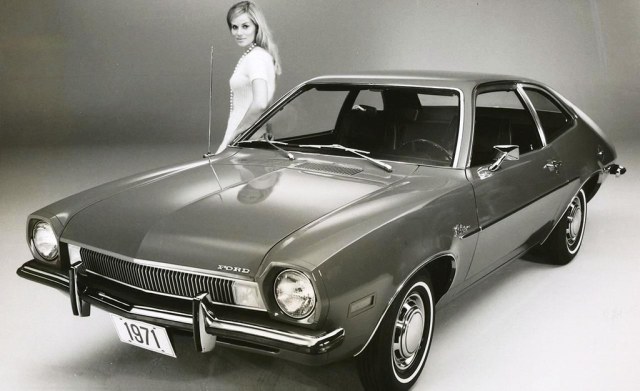
Ford Pinto
While most of the cars on this list are here due to aesthetic design fails, poor craftsmanship or lackluster sales, several of the worst cars ever made were actually dangerous to drive. These vehicles had such fundamental mechanical and design flaws that they posed a serious risk to the occupants of the car.
Chrysler’s PT Cruiser had a unique look, which many people derided, but it’s most notable for its mercurial nature. The car was known to shut off in the middle of driving, completely out of the blue. The 1979 Oldsmobile Cutlass Supreme, meanwhile, had an engine that exploded when it made 90 horsepower.
But the most infamously dangerous worst car in history is the Ford Pinto. The only feature that needs to be discussed about this 1970s vehicle is its fuel tank. The Pinto famously featured an exposed fuel tank. Cars involved in rear-end collisions, even at slow speeds, tended to burst into flames. Later on, the “Pinto memo” was publicized, which proved the company concluded it was cheaper to settle victims’ lawsuits ($50 million) than to recall and fix the cars ($120 million).
Aptly, the coda to the Pinto’s story is the car’s presence in American Museum of Tort Law.
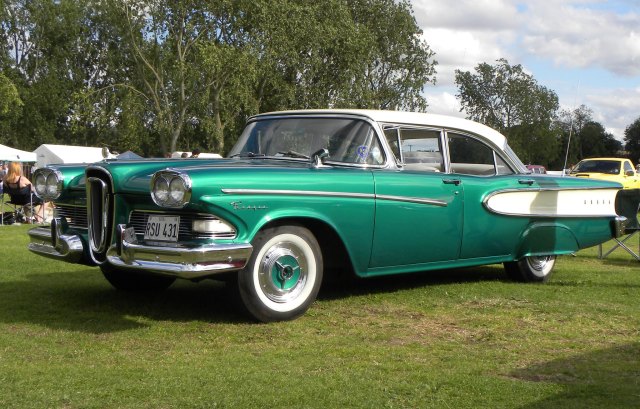
Ford Edsel
We’ve reached the pinnacle of the worst cars in history. For decades, the terms “automotive failure” and “the Edsel” have been all but synonymous. So what went so wrong?
In the mid-1950s, Ford came to the conclusion that it should expand its product line. Specifically, it needed a new, mid-priced brand to go in between its flagship Lincoln and mid-level Mercury. Studies predicted that “by 1965 half of all U.S. families … would be buying more cars in the medium-priced field, which already had 60% of the market,” according to Time magazine. And so the Edsel was created, named after Henry Ford’s son, no less.
It’s not so much that the Edsel was such a terrible car – although it certainly had its faults, namely its price. It’s that it suffered the unfortunate fate of being hyped up as the greatest thing on four wheels. Believe it or not, Ford booked an hourlong prime time television slot on CBS to unveil the car, claiming the broadcast day as “E Day.” “The Edsel Show” included performances by Frank Sinatra, Bing Crosby, Rosemary Clooney and Louis Armstrong. By this time, however, the push for compact cars was well underway. Just two years after its prime-time debut, the Edsel’s run was over after less than 120,000 were sold. Ford had estimated it could sell up to 400,000 cars a year. In total, the company spent roughly $350 million on the Edsel’s research, design, tooling and production facilities, the equivalent of nearly $3.2 billion in 2021.
To add insult to injury, while the Edsel was cementing its place as the biggest automotive flop ever, “The Edsel Show” was nominated for an Emmy.
What do you think are some of the worst cars in history? Let us know in the comments below!
372 Thoughts on “The Worst Cars in History”
Leave A Comment
Comments are subject to moderation and may or may not be published at the editor’s discretion. Only comments that are relevant to the article and add value to the Your AAA community will be considered. Comments may be edited for clarity and length.



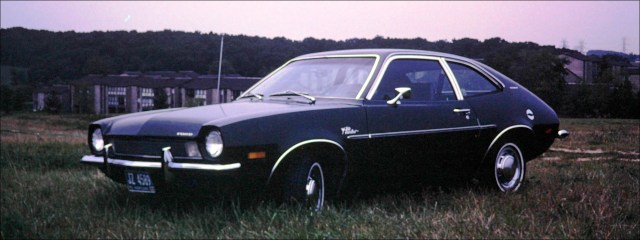
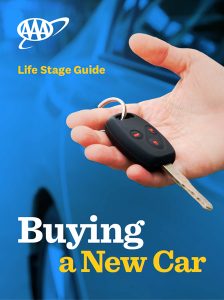
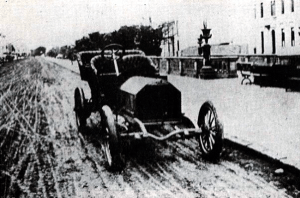









Austin America-unquestionably the worst.Every time it rained or snowed the wiring got wet and the car stalled.The company re-wired the car several times to no avail.
Two of the all-timers were the Trabant an East German car with no acceleration famous fire the gushing dark smoke that always accompanied it!
And the Reliant Robin, a three-wheeler that could be guaranteed to end up upside down!
Notice that virtually all of these comments deal with American-made cars. We have forgotten how to make cars (or anything else) in this country. My answer, for cars, is: always buy Japanese (the Germans are in the process of forgetting, too). The last American car I owned was a 1953 Pontiac. The problem with American cars isn’t the workers who assemble them, but the oblivious and incompetent management of American business in general.
To omit the Soviet era Lada and the East German Trabant (the “Trabi “) is criminal. I’ve ridden in lots of old Ladas in Cuba and they make all the cars on this list look like Maybachs by comparison.
The AMC Pacer. Looked like a fishbowl and any turns in that car felt like it was going to tip over.
The Lincoln Mercury Capri in 1975. I bought one in LA that vibrated so much from day one that the rear view mirror image was blurry. The dealer wouldn’t take it back. The electrical system had a problem so my brand new car would lose power and stop on the LA freeway without warning. The gear shift came off in my hand. Out of the socket, as I was driving a few years later down Connecticut Ave in Washington DC. I couldn’t afford to replace the car, it was a lemon, but Ralph Nader hadn’t gotten the lemon law passed yet. It’s a miracle I lived through five years with this horror show.
Late 70’s Cadillac diesel, Oldsmobile, Buick.. time bomb motors. Range Rovers, Land Rovers ( past & present) Mercedes’ air suspension cars, Audi All Road & almost any BMW with the “new & improved “ plastic heads to go with the plastic radiators, our great American Trucks made with inferior brake-lines & metal that can with stand up to only 3 years without breaking in half from rust.. Over computerized cars with goal of being driver free ( really ???). Ever head of software problems with your home computer or hackers. That would be great amusement for hackers taking control of driving your car for you !!!
A 1977 Dodge Monaco with a 318 cubic inch engine. The car would stall every time it rained unless it was warned up for 10 minutes. The dealer replaced the carburetor, coil, ignition wires with no success. Also, the passenger front door mechanism froze during cold winters prevent the door from latching properly. Kept it for 8 years and 76,000 miles before trading it in for a Buick Century where dealer stripped the oil pan bolt. Oil also started leaking from the distributor. Switched to Toyota.
1998 VW Passat Wagon gets my vote. In the space of three years, I had to replace the front suspension on both sides and the oil cooler. The electrical system was full of bugs: front doors would lock, but the rear doors wouldn’t; sunroof would open by itself, theft alarm would go off while driving, just to name a few! Three times, the car refused to start, not even a “click”- electrical problems again! Replaced the ignition switch, the clutch lock-out switch and finally the breaker box. Oh, yeah, the third time it wouldn’t start was on the day of my mother’s funeral!
My brother bought a Ford pinto
He had it for like 10 years
His wife bought a corvair
She said it was always a pain in the neck
I had a used Pinto. Picked it up at the shop on my way to work, 2nd shift. After I got out of work, St Patrick’s Day night, driving home when the Pinto stops running while I was crossing a bridge in the middle of it. This bridge was made out of metal grating. You could look through it and see the water below. Unnerving to say the least. The bridge had no break down lane, so I was stopped dead in the lane. First car hit me in the rear while I was trying to start it. When I woke up I got out of the car and tried to direct cars away from me. I saw another car flying towards me and it was not moving to the other lane. I got up on the guard rail and turned away. I really thought it was going to blow. It plowed into the rear of the Pinto. No explosion again. It moved the Pinto 3 car lengths forward and they swerved back and forth the bridge, stopped on the guard rail, tilting forward. When the tow truck picked it up the drive shaft and numerous parts fell off the under carriage of the Pinto. So this Pinto took 2 rear end collisions and didn’t explode. But it did break down on this bridge the day I got it back from the shop.
I went through 3 used cars within 9 months – I’d had it!!! At 18 I managed to save up $600 and the dealership gave me $200 for the trade-in. I bought my very first new car: a 1971 Ford Pinto in Grabber Blue! Price was $2,215.56 with extras like, LOL, carpeting and chrome around the wheel wells (Oooo!), and the monthly payment was a whopping $51.11! At 18 I could afford that. What I couldn’t afford was replacing the cam shaft that wore down at 20,000 miles! Seven years later at about 35,000 miles I sold the car to my sister. At 40,000 miles it needed another cam shaft, which she replaced. At 59,000 miles we could hear the engine tapping again so she sold it. A mechanic told me that those cam shafts were not tempered properly at the factory.
De Lorean DMC 12 I own one. The car weighs just 2712 lbs. That’s NOT heavy. Stock the 130 hp 174 cubic inch six has 0-60 times of under 10 secs on the manual 5 speed and a 130 mph top speed. It’s not the fastest car in the world, but it’s not slow or “underpowered” either. It was designed to be a “respectable” sports car. John De Lorean said “One of my cars would save about 55 barrels of crude over it’s lifetime” The 1982 Corvette weighs 3233 lbs and it’s 350 ci V8 only had 200 hp. I installed a new stage 2 engine in my DMC with 197 hp It’s weight and power are now comparable to a Sunbeam Tiger or a 1969 Porsche 911. The truth is the DMC was well designed and was a good car. It was designed to resist corrosion. Besides stainless steel it has Glass Reinforced Plastic Floors and underbody you can fix like fiberglass. It’s brilliant! Cryogenicly set tortion bars made by Grumman Aerospace open the doors (Yes the guys who made the Apollo 11 LEM!). Much better design than the Mercedes Gullwing. And as for the Hellcats -Quite frankly I just can’t believe you can make 800 hp and not hurt the envirnment no matter what happens at inspection, plus you put the public in danger.
I had two really bad cars which were the first two I owned. Definitely cemented a fear of driving and to this day, I am a nervous driver and I don’t really enjoy it. I bought as my first car in 1986, a 1977 Chrysler Cordoba. I needed a car to commute and had limited funds. The car would breakdown unexpectedly and inconveniently. I had a lot of issues with a catalytic converter, maybe a timing chain and so many other issues. After the Cordoba died, still low on funds, bought a 1988 Hyundai Excel (before Hyundais were good quality). Also experienced a lot of traumatic breakdowns in that car.
Had a Vega in the 70’s. Had to carry a screw driver and a jar of indicator “needles” for the gear shift. Every time I parked in a parking lot the needle would break off. Didn’t know if I was in drive or reverse! Judy
Just out of the Air Force bought a brand new 71 vega hatchback had more problems with it several recalls the frame broke off from the body. Traded it in for a 72 Dodge Dart Demon drove it into the ground.
Hard to believe Chevy Monza isn’t on this list. Bought a new 1979. Finally turned it with only 37,000 miles on it. Had replaced the carburetor twice! Had to always back in since it wouldn’t work well in reverse till engine warmed up. A friend had a Monza that caught on fire while driving it. Was told it was the carburetor.
Cried when I had to sell my 1970 VW Karmann Gia because my mechanic could no longer find parts. He bought it from me for $200. Just to pass inspection he had to go to a junkyard and buy the yellow taillight for $35! Having a shift with no clutch and great mileage on regular gas was amazing! I bought the new Honda Civic. Within months the dashboard fell off! Traded that one for my first Subaru. I will never drive any other car again! My favorite was my Forrester. It’s 10inches shorter than the Outback with more headroom and the interior space is amazing. Unfortunately I cannot afford them. I now drive the automatic sedan due to injuries and my age, but it’s still the safest car there is! My only complaint is that it sits too low and I can’t even see my bumper. I’m old school and don’t want the car driving me! All my cars were 5speed manuals. Both my son and daughter-in-law own the new high end crossover Subarus that beep at everything, with dashboards that are very distracting for me! I’m only 4’11’’ and even though I like sitting higher to see the road, they are difficult to get into and climb out of! Great for snowboards and allow the gear they cart around, along with the dog!
About the Corvair. The first 4 years (’60- ’63) can be considered defective by design, but only if driven as a sports car instead of a family saloon as intended. The omission of a $15 stabilizer bar ( GM was run by accountants, NOT engineers) was responsible. The ’64 was an interim year when a rear ‘camber compensator’ was added to correct the problem. The ’65-’69 models (with the great new styling) eliminated the problem entirely with a NEW muti-link rear suspension ; these can be considered sports cars masquerading as economy cars.
I’m sorry there was no room for the Corvair. I had a used ‘65 convertible for one LONNNNG year (‘68). I got very adept at changing the fan belt – by the side of the highway. NASCAR pit crews couldn’t be faster. Traded it in for a new ‘69 Camaro – which I still drive 52 years later.